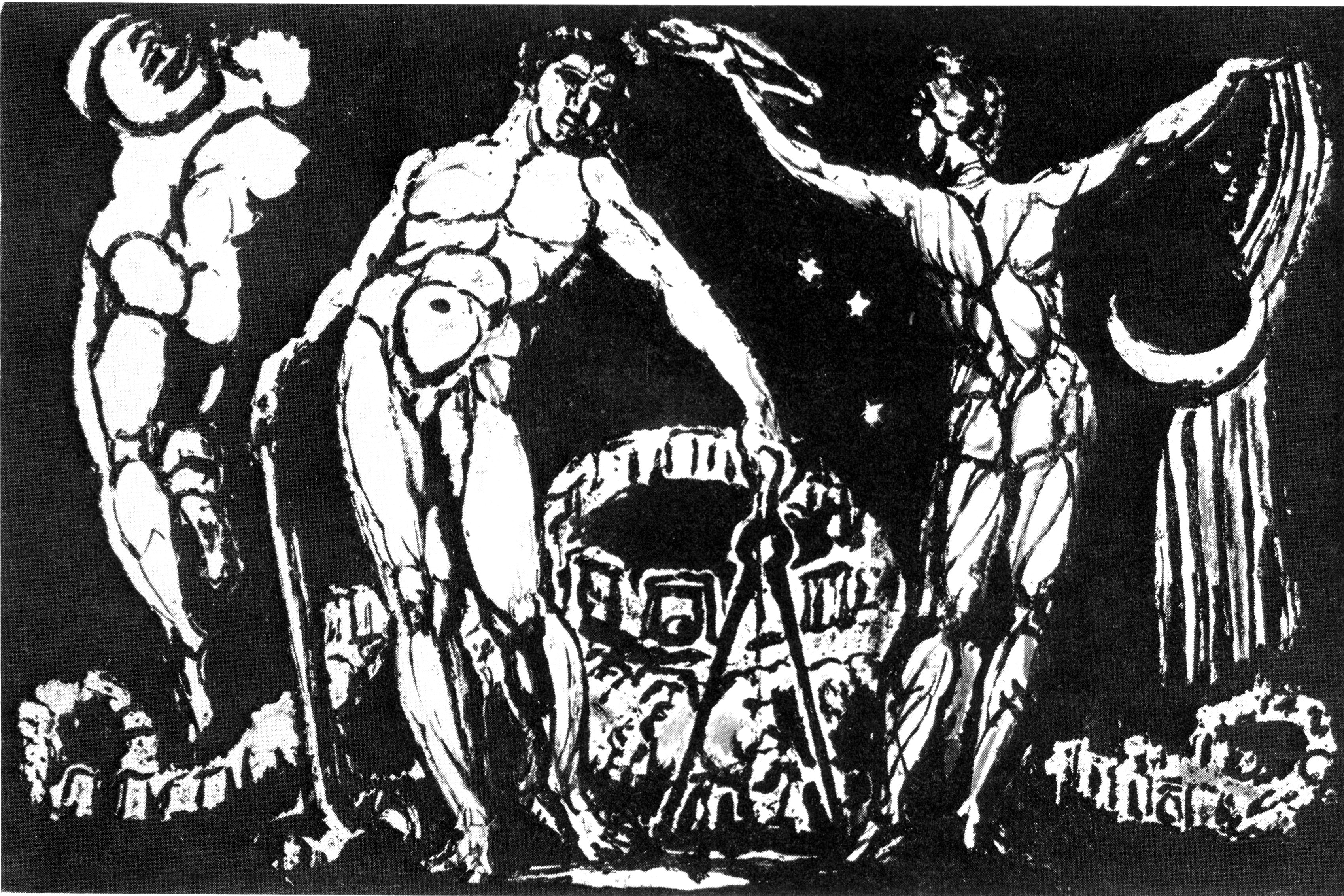Here is a perspective on Blake included in J. B. Priestley's long study on time from multiple points of view over extended periods. In his book Man & Time, J. B.Priestley postulates
three categories of time:
Page 292
"I propose to call these three times - time One, time Two and
time Three. To follow some therorists and call time Two
'eternity,' a term rich in associations, would only mislead and
confuse many readers...So let us make do with times One, Two and
Three, remembering that we live in all three of them at
once, though we may not enjoy,so to speak, equal portions of them.
As visible creatures on earth we are ruled by time One...Our brains have developed through eons into marvelous instruments of time-One attention.
...Our relation through the brain with time One tends to be practical and economic, good for our matter-handling business, which helps to explain why we are great time-One people and mostly try not to believe in anything else.
..our minds cannot be entirely contained within time One.
..Now in time Two, where the dreams belong, there is no
distinction between the possibilities which are actualized and
those which are not..The alternative possibilities, together with
the choice between them, cannot exist in time One."
Page 298
"Because imagination appears to be free of the limitations we
place on time One, we think of it as being outside Time. It is
there, however, that the nothings begin. We might do better if we
thought of it belonging to a different Time order, to another
time...imaginative creation seems to imply not a second time
order, contemplative and detached from action, but a third, in
which purpose and action are joined together and there seems to be
an almost magical release of creative energy.
If there is a part of the mind or a state of consciousness that is outside of the dominion of time One and time Two but is governed by a time Three, then that is where the imagination has its home and does its work. And it may be that there imagination is not something escaping from reality but is itself reality, while the world we construct from our time-One experience is regarded there is something artificial, abstract, thin, and hollow.
...I prefer another explanation of these dreams...as glimpse of the future already shaped but still pliable, yielding...to will and action...There is an idea not unlike this in Blake's Jerusalem , in which Los (the name is Sol reversed) can be taken as the symbolic figure of Time:
"All things acted on Earth are seen in the bright Sculptures of
Los's Halls & every Age renews its powers from these Works
With every pathetic story possible to happen from Hate or
Wayward Love & every sorrow & distress is carved here
Every Affinity of Parents Marriages & Friendships are here
In all their various combinations wrought with wondrous Art
All that can happen to Man in his pilgrimage of seventy years"
Jerusalem, Plate 16, (E 161)
Page 300
"we could say that ego and its field of consciousness belong to time One, the unconscious to time Two,the superconscious to time There. But we must remember there are no separate compartments and exact divisions, and that we live, even here and now, in all three times."
Priestley captioned this picture:
"One of William Blake's drawings for his Jerusalem. In the center, Los stands between life and death. On the right, the moon and the stars preside over the dark entrance to the Serpent Temple (the pathway of experience); on the left the sun of Time is carried back to eternity."

No comments:
Post a Comment